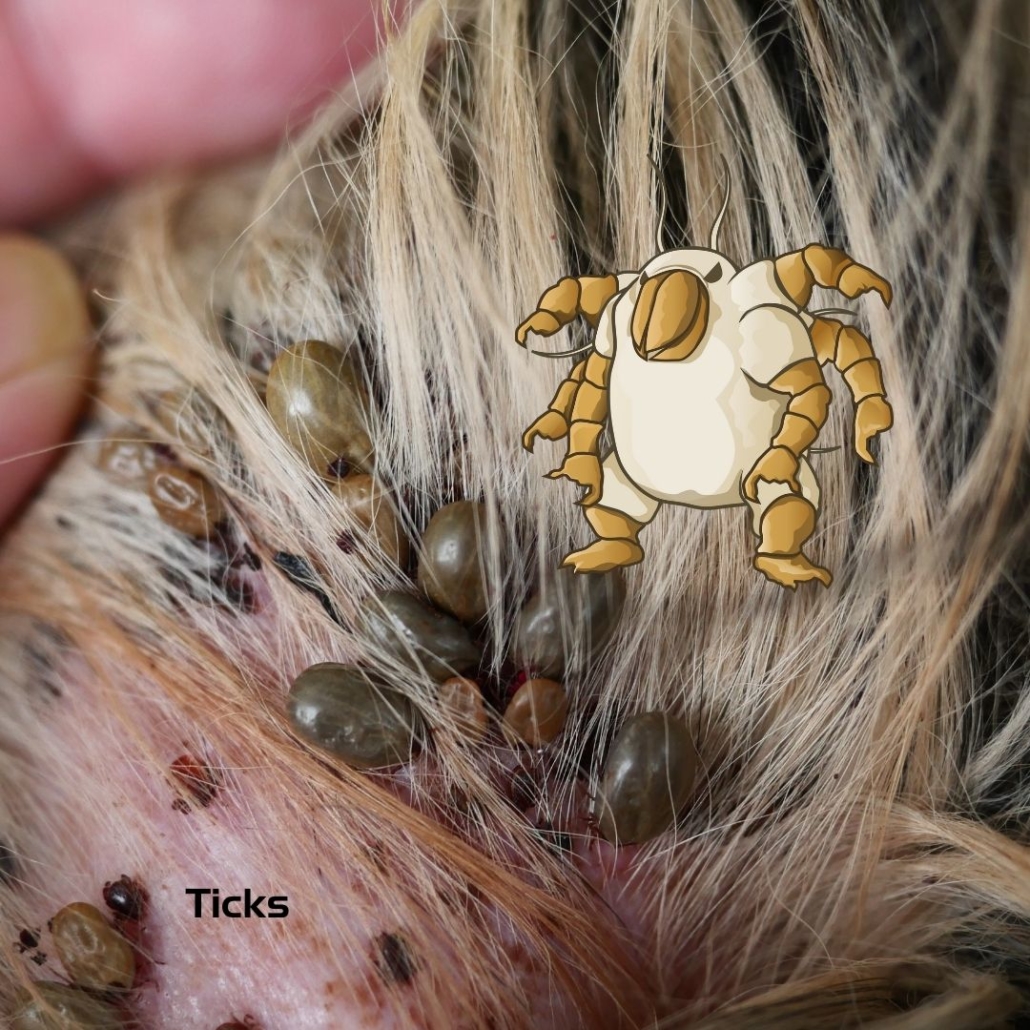About Ticks:
Ticks are small 8-legged pests in the arachnid family. Ticks are typically found feeding on their host, (animals, and sometimes humans). Ticks may transfer disease to your pets; however, your pets cannot transfer that to you. Only direct contact with the tick may cause disease spread. On human skin it is localized red and itchy. Most ticks develop outside and are transported indoors on their host, only the Brown Dog Tick is able to complete its full life cycle indoors. Ticks are blood-suckers, relying on their host to live.
If you are experiencing a large Tick issue in your home, it is more than likely a Brown Dog Tick. Brown Dog Ticks receive their name, as they favor dogs in the U.S., Other parts of the world and even southern states, they are found often on Rodents and Deer. While this is true, nymphs can be found on humans, and adults typically on animals hosts. You will not see a large tick infestation without a dog present, yet removing the dog once infested in the home, will only switch the carrier. You should consult a Pest Control Exterminator to help inspect the home for other pests that may be carrying the ticks, and exclude or seal the home for prevention. Dogs or affected animals must also be treated with flea and tick control for pets.
Where to Look for Ticks:
Note: Ticks may also be found on other mammals including birds and sometimes reptiles and amphibians.
Tick Self-Control Treatment Methods:
- Launder or discard the infected animal bedding
- Steam Clean the area and any rugs that may be near
- Launder all lines if concern of humans affected as well
Self Removal:
Emergency Care:
Contact a Professional
Are you experiencing issues with Ticks Indoors? Contact Us Now and get those pests under control.




